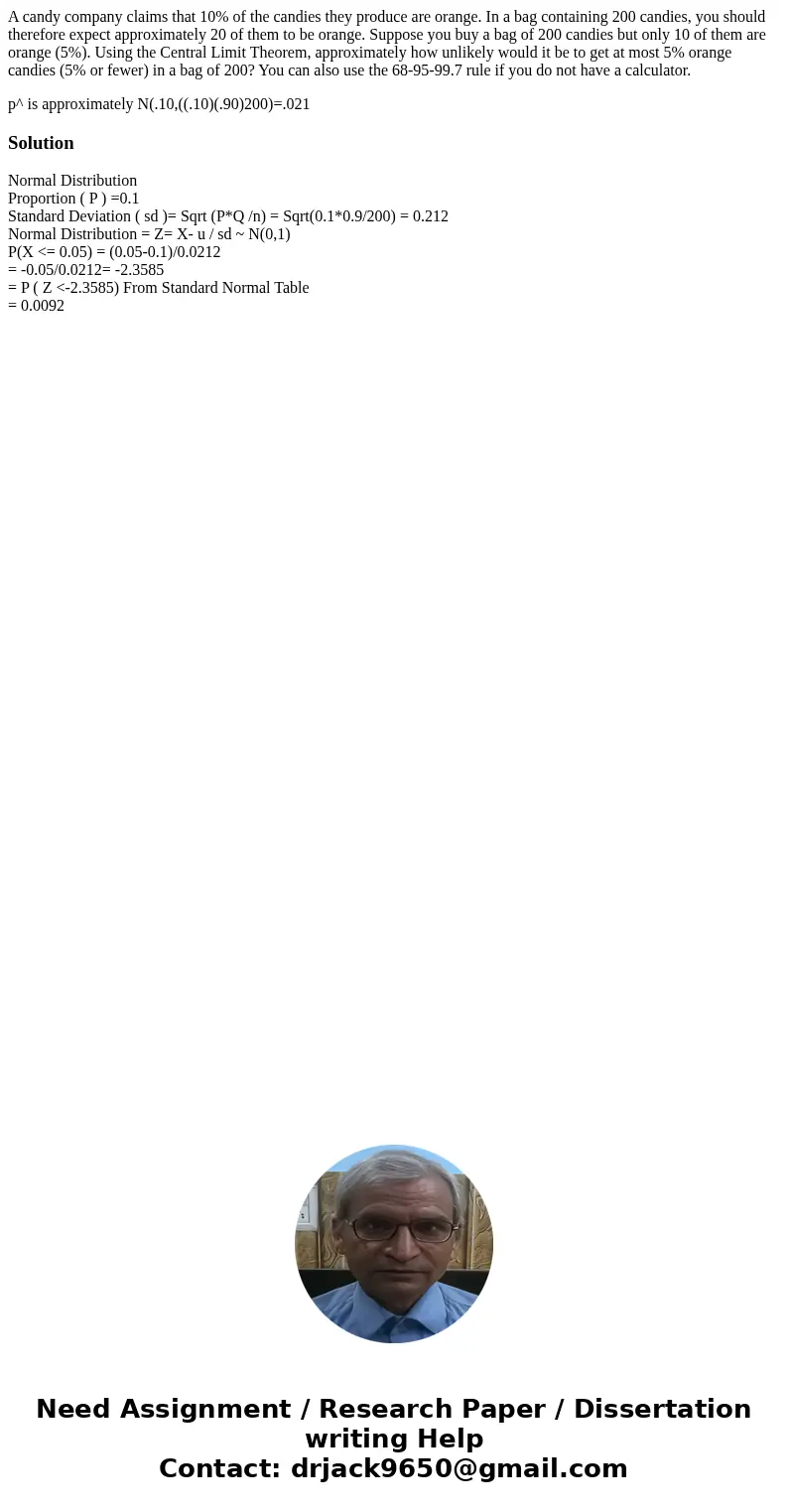A candy company claims that 10 of the candies they produce a
A candy company claims that 10% of the candies they produce are orange. In a bag containing 200 candies, you should therefore expect approximately 20 of them to be orange. Suppose you buy a bag of 200 candies but only 10 of them are orange (5%). Using the Central Limit Theorem, approximately how unlikely would it be to get at most 5% orange candies (5% or fewer) in a bag of 200? You can also use the 68-95-99.7 rule if you do not have a calculator.
p^ is approximately N(.10,((.10)(.90)200)=.021
Solution
Normal Distribution
Proportion ( P ) =0.1
Standard Deviation ( sd )= Sqrt (P*Q /n) = Sqrt(0.1*0.9/200) = 0.212
Normal Distribution = Z= X- u / sd ~ N(0,1)
P(X <= 0.05) = (0.05-0.1)/0.0212
= -0.05/0.0212= -2.3585
= P ( Z <-2.3585) From Standard Normal Table
= 0.0092

 Homework Sourse
Homework Sourse